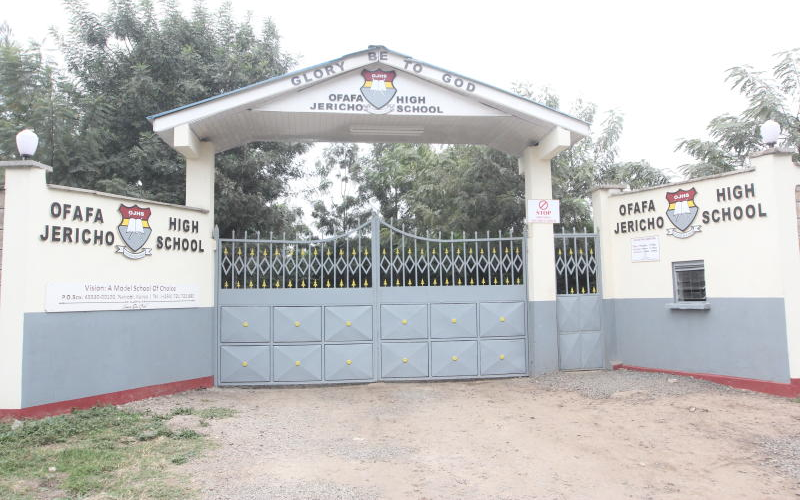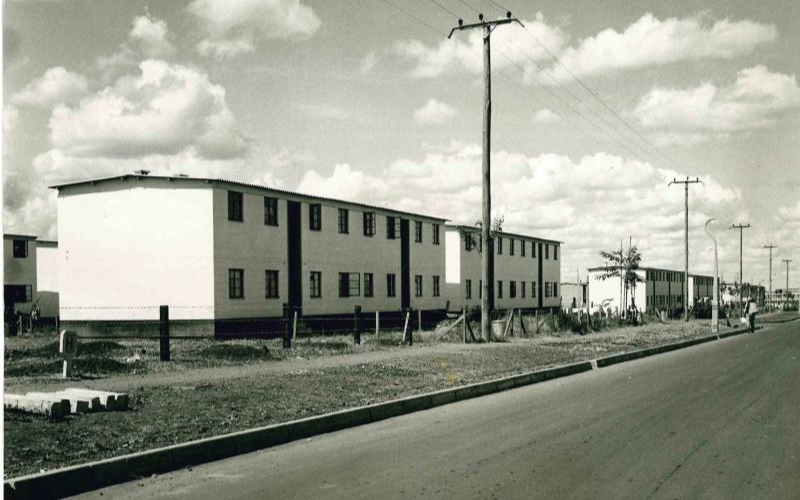Whether you are a Nairobi resident or a visitor, you might be familiar with the saying: “meet me at Ofafa”. The question is, which one? Jericho, Maringo or the school on Jogoo Road?
Beyond this mix-up lies a story about a man, a city, and how communities keep memory alive.
The word “Ofafa” is “sprinkled” all over Nairobi’s Eastlands – in estate names, in a storied boys’ school along Jogoo Road, and in directions shouted from matatu doors.
It sounds like slang, but it is not. It is someone’s surname, and a memorial for Ambrose Michael Ofafa, a Kenyan nationalist and city councillor assassinated in 1953. Long after his death, his name became a compass for how Nairobians move, live, and belong.
So, who was Ofafa?
Ambrose Ofafa was part of the generation that agitated for African political voice in late-colonial Kenya. He served on the Nairobi Municipal Council and was prominent in civic affairs before he was shot dead in 1953, during a tense era that reshaped the country.
His community and the city commemorated him in buildings and estates, and the name stuck: Ofafa Jericho, Ofafa Maringo, and the renowned Ofafa Jericho High School on Jogoo Road. There’s even an Ambrose Ofafa Memorial Hall in Kisumu.
Ofafa Jericho comprises maisonettes, matatus, and a football pitch. Ofafa Jericho sprang from a late-1950s/early-1960s period due to the city’s push to build organised African housing, with two-storey maisonettes and tree-lined courtyards that felt almost suburban by Eastlands standards.
Planners imagined “neighbourhood units”, walkable blocks, a market nearby, and a school within reach. Today, the bones remain. Those terraced walk-ups, the inner courts humming with chapati smoke and afternoon gossip.
However, time has done what time does. Families grew, and rooms were partitioned
On Jogoo Road, Ofafa Jericho High School still commands respect. The school is an Eastlands institution whose alumni talk about discipline, grit, and the way school pride follows you for life. Ask any parent who has queued at dawn for Form 1 admission, and they will tell you the name carries weight.
Ofafa Maringo
Maringo is the estate of short distances: shop downstairs, church around the corner, a cousin two doors away. Built in the same city-housing wave, Ofafa Maringo shares Jericho’s architectural DNA – compact units, communal courtyards, and the social choreography that makes Eastlands tick.
Here, aunties swap babysitting shifts; boda guys become unofficial parcel couriers, and the mama mboga knows whose child prefers sukuma without tomatoes.
The estate has weathered overcrowding and wear, but the sense of “neighbours as family” remains its stubborn magic.

Then there is the Ofafa Jericho school, which became a landmark
Say “Ofafa” to a certain generation, and they will answer “Jericho High.” The school’s location along a major artery means the name doubles as a map pin for taxi drivers and first-time visitors.
For alumni, it’s an identity. For Nairobi’s daily traffic, it’s a landmark: “Nishukishe Ofafa!” — a call that slices through morning honks and conductor banter.
The mix-ups are part of the charm. Of course, Nairobians mix them up. How could we not? Estates overlap, ward boundaries shift, and memories travel faster than maps. But the confusion is affectionate. It is said a name lives in people’s mouths, not just on signage.
If anything, the “which Ofafa?” moment opens the door to a history lesson.
Then, now, and next
The Ofafa estates grew from a city housing programme meant to create dignified, serviced neighbourhoods for African workers in the late colonial/early independence era.
In Jericho’s case, historical records even cite collaboration with the Israeli government under a tenant-purchase model, one of many experiments in building a modern Nairobi.
But today, decades of population growth and under-investment have strained infrastructure. Courtyards morphed into extensions. Shared taps became flashpoints. And yet, the social fabric – chamas, church groups, football clubs, alumni associations, still stitches daily life together.
Journalists have called parts of the older Eastlands estates “fading gems,” but anyone who has sat through a Jericho derby or a Maringo wedding committee meeting knows there is plenty of shine left.
Next is where the story gets complicated and juicy. Nairobi has a standing plan to renew old estates through public-private partnerships. Drafts and proposals have flagged Jericho, Maringo, and other Eastlands neighbourhoods for redevelopment into higher-density housing.
Residents ask fair questions: What happens to tenant-purchase rights? Who gets to return? How will the social networks that make these places home survive demolition and reconstruction? Policy papers sketch the future; communities want a seat at the table that draws it.
It is tempting to treat Ofafa as just a catchy Nairobiism. But remembering Ambrose Ofafa isn’t trivia; it’s civic memory. A city is a living archive, some names on plaques, some on lips.
When estates and schools carry a fallen leader’s name, they bind everyday life to a lineage of struggle and service. The next time someone says “meet me at Ofafa,” there is an echo underneath: meet me at the crossroads of past and present; meet me where Nairobi remembers.
And maybe that’s the point. The man became a map. The map became a neighbourhood. The neighbourhood became a home.


